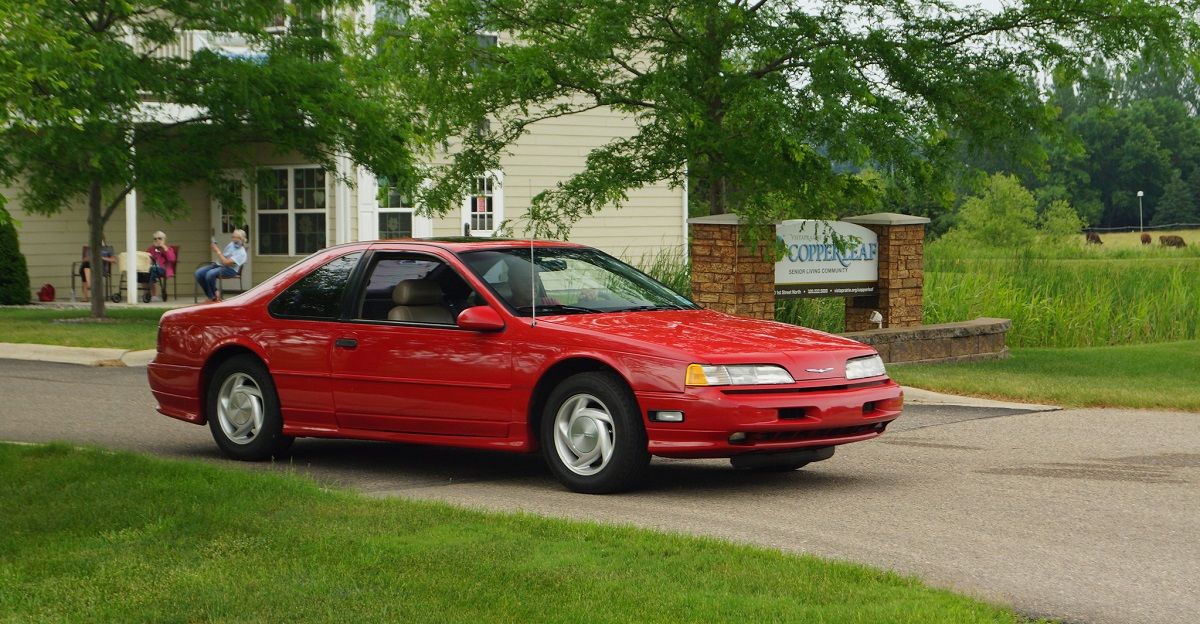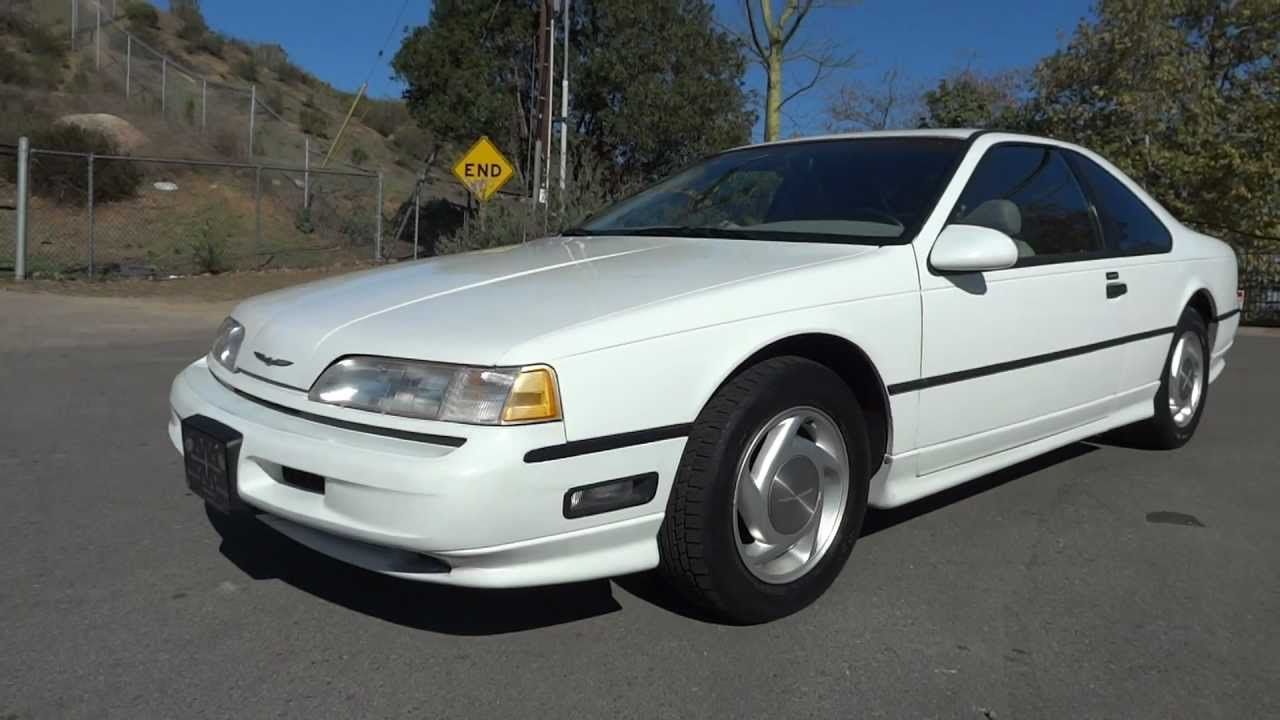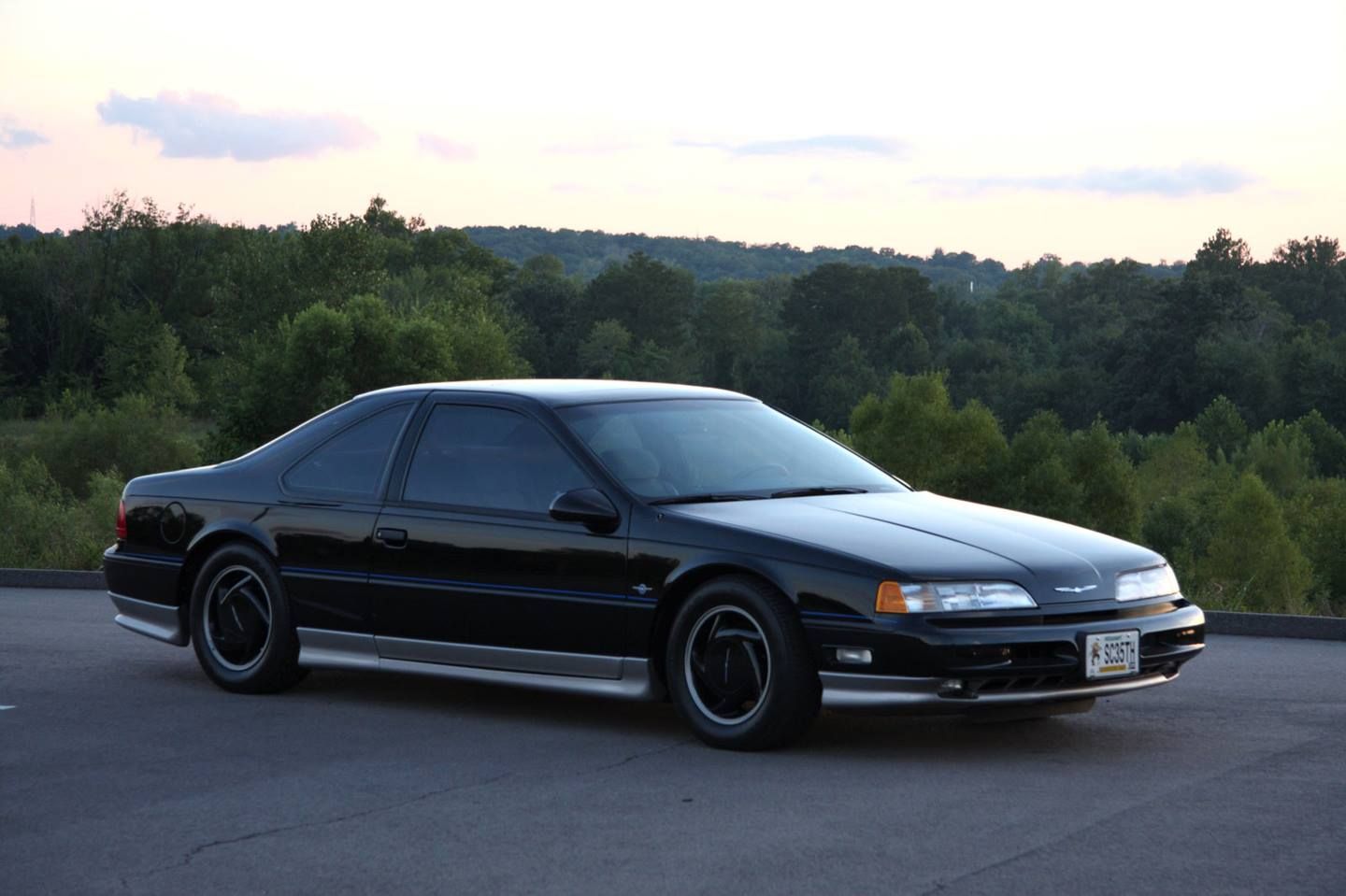The Ford Thunderbird was a personal luxury automobile manufactured by Ford from 1989 until 1997. It debuted alongside its sister car, the Mercury Cougar, on December 26, 1988 as a 1989 model.
The 1989 Thunderbird had a more aerodynamic body than its predecessor, the 1988 Thunderbird, which was slightly shorter overall but had a nine-inch longer wheelbase. The T-Bird was initially produced in 1955 and went through eleven versions before being retired in 2005. It was designed to compete with the Chevy Corvette as the American take on the gran turismo format of huge, luxury coupes, which originated in Europe.
Whether or not it succeeded is an issue for a different conversation. However, we can tell you right away that not all of the eleven generations of the family tree are related.
The 1989 Ford Thunderbird SC Specs And Features
The Ford T-bird SC is a rear-wheel-drive vehicle with a front-mounted engine and a two-door coupé body layout. The engine in the Ford Thunderbird Super Coupé is a 3.8-liter, overhead valve 90-degree V-6 cylinder with two valves per cylinder supercharged petrol engine. It generates 207 hp at 4,000 rpm and 315 lb-ft of maximum torque at 2,600 rpm in this application.
A four-speed automatic gearbox transmits this power to the wheels. The kerb weight is given as about 3,740 kbs. It has a wheelbase of 113.0 inches, a length of 198.7 inches, width of 72.7 inches, and it is 52.2 inches tall.
Super Coupes were equipped with a number of special features in addition to the more powerful engine, highlighting its higher performance temperament as compared to normal Thunderbirds. The SC was also a technological marvel. It employed a Roots-type Eaton supercharger, intercooler, and computer-controlled distributorless ignition in its 3.8-liter V-6, which was a derivative of Ford's Windsor small-block V-8.
Rivals To The 1989 Ford Thunderbird
Although The T- bird SC is a quality automobile, it had other cars in competition with it and they include;
Chevrolet Corvette
The Chevrolet Corvette C5 or the sports variant Z06 C5, which is a few generations older than the current C7, is a decent middle-ground alternative, offering quick acceleration and a price range of $20,000 to $25,000. It has a storied racing history, having been the first Corvette to win the LeMans 24 Hours. It boasts a hydroformed box frame for a more durable body and ride. That implies the steel tubes that make up the body's foundation were produced using pressured water rather than heat.
A LS1 V-8 engine is also included. Unlike the Corvette, which was designed to compete with Europe's sleek, fast sports cars, the Thunderbird pursued a slightly different path, becoming the "personal luxury automobile," or the American equivalent of the European grand tourer. Many Americans liked the new Thunderbird's focus on luxury rather than all-out sports abilities, to the point where it outsold the Corvette.
Hyundai Sonata
Since 1985, the Hyundai Sonata has been a mid-size automobile developed by Hyundai of South Korea. The first generation Sonata was a facelifted Hyundai Stellar with an engine improvement that was debuted in 1985 and pulled from the market two years later due to poor customer response.
It is a four door sedan and front-engine, rear-wheel-drive (1985–1988) and front-engine, front-wheel-drive (1988–present) layouts are available. The length is 4,578 mm (180.2 in), the width is 1,755 mm (69.1 in), and the height is 1,380 mm (54.3 in)
Buick Regal
Buick released the Regal, an expensive mid-size automobile, for the 1973 model year. Due to the fall of the personal luxury coupe market, the Regal was originally positioned as a personal luxury automobile and was normally offered in both coupe and sedan variants until 1997, when it became a sedan-only model.
Between 1973 and 2004, the Regal shared bodywork and powertrains for a few model years. Woodgrain trim on the dashboard and door panels, as well as door-pull straps and bench seats with center armrests in cloth, velour, or vinyl upholstery, made Regal interiors more sumptuous than lesser Century models. A 60/40 split-bench seat with armrest was available as an option throughout the duration.
More Reason To Love The '89 Thunderbird
With the Super Coupe due to appear in 1989, Ford had its work cut out for them after the Thunderbird Turbo Coupe was voted Motor Trend Car of the Year in 1987. Expectations had never been higher before its introduction, and the pressure was on Ford to deliver something spectacular. There are numerous things to love about T-bird and amongst them is the fact that The Thunderbird had always been known for its lavish elegance and underappreciated performance, especially in its top trim level.
The previous generation's light Fox body chassis, which was shared with the Mustang, was terrific for performance but not precisely the platform of choice for Ford's legendary personal luxury coupe's better handling and ride quality.
The Super Coupe was also a handling and technology pioneer, with independent rear suspension, Tokico adjustable shock absorbers, and four-wheel disc brakes directly from the showroom floor.
Final Thoughts
In 1994, upgrades to the supercharger, larger fuel injectors, and greater compression improved horsepower and torque by 20 horsepower and 20 pound-feet. According to a Motor Trend road test, the improvements allowed the updated Thunderbird SC to accelerate from zero to 60 miles per hour in seven seconds and to complete the quarter mile in 15.2 seconds at an impressive 88.1 miles per hour.
The Super Coupe's supercharged 3.8-liter V6 engine and advanced MN12 chassis made it one of the first local cars to compete on a road course against European opponents. The Thunderbird SC undoubtedly contributed to disrupt the status quo in an era when American automobiles were constantly pulled apart for their poor handling.



